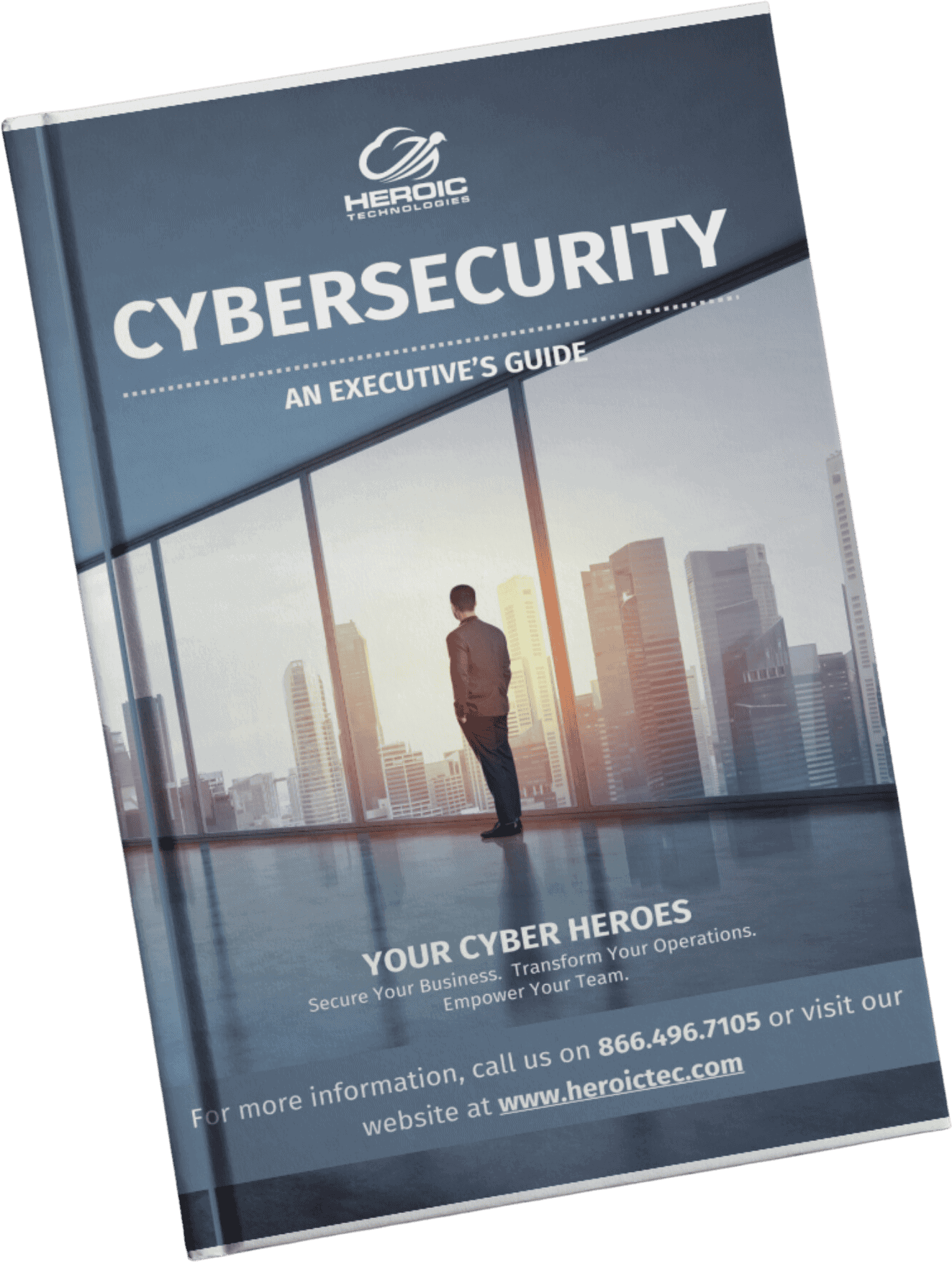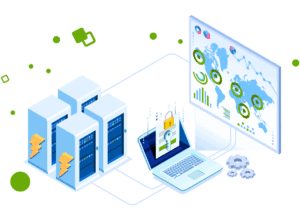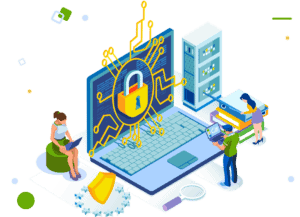Challenges Businesses Will Face With Their Portland IT Systems in 2025

In 2025, small businesses will face a variety of IT challenges. Every business needs to keep up with fast-changing technology and deal with more sophisticated cyber threats. Some key issues your business may encounter include:
- Growing cybersecurity threats: Attacks like ransomware, phishing, and insider threats are becoming more common.
- Limited budgets: Financial constraints make it difficult for businesses to invest in advanced technologies.
- Remote work setup: It’s important to optimize systems for a distributed workforce to ensure productivity.
Dealing with these Portland IT challenges is crucial for growth and security. Technology plays a vital role in business, and companies that find strategic ways to overcome these obstacles will not only protect their sensitive data but also maintain customer trust and drive innovation.
We’ll explore the main IT challenges small businesses are likely to face in 2025, providing practical solutions to help them overcome these obstacles. Each section will offer insights specifically designed to empower small businesses, covering topics such as improving cybersecurity measures and optimizing remote work environments.
1. The Evolving Cybersecurity Landscape
The world of cybersecurity is constantly changing, and this poses significant challenges for small businesses. As technology advances, so do the methods used by cybercriminals. Here are some key threats to be aware of:
- Ransomware Attacks: Malicious software that encrypts data, demanding payment for its release.
- Phishing Schemes: Deceptive emails designed to trick employees into revealing sensitive information.
- Insider Threats: Risks posed by current or former employees who may misuse their access to critical systems.
The Urgency of Cyber Threats
Statistics highlight the seriousness of these threats. In 2024, a staggering 94% of small and medium-sized businesses (SMBs) reported experiencing a cyberattack, emphasizing the need for immediate action.
Protecting Data and Maintaining Trust
Safeguarding sensitive information is crucial for maintaining customer trust and ensuring business continuity. To effectively tackle these evolving cyber threats, small businesses must implement strong cybersecurity measures. Here are some essential strategies to consider:
- Employee Training Programs: Regular training sessions can equip staff with knowledge on recognizing phishing attempts and adhering to best practices.
- Regular Risk Assessments: Conducting thorough assessments helps identify vulnerabilities within systems and processes, allowing for timely remediation.
- Leveraging Managed Service Providers (MSPs): Partnering with MSPs provides access to expert support and advanced cybersecurity tools that may be out of reach for smaller firms.
Cybersecurity as a Strategic Business Decision
Investing in cybersecurity is not just about protecting against threats; it’s also a strategic business decision that can set a company apart from the rest. By prioritizing data security and committing to ongoing training and assessment, small businesses can build a strong defense against potential cyber threats.
2. Budget Constraints and Cost-Effective Solutions
Small businesses in 2025 will likely face budget constraints that hinder the adoption of advanced technologies. Limited IT budgets can create significant challenges in maintaining competitiveness and ensuring operational efficiency.
Strategies for Prioritizing Tech Needs
To navigate these constraints effectively, businesses can implement strategies to prioritize essential technology needs without overspending:
- Assess Business Objectives: Clearly define business goals and identify which technologies directly support these objectives.
- Conduct a Needs Analysis: Evaluate current IT infrastructure and pinpoint gaps that require immediate attention.
- Implement Phased Upgrades: Gradually upgrade systems rather than pursuing complete overhauls, allowing for better financial planning.
Cost-Effective Alternatives
Exploring cost-effective IT solutions is crucial for maximizing value within budget limitations. Notable alternatives include:
- Cloud Computing: Utilizing cloud services enables businesses to access advanced tools without large upfront costs, offering flexibility and scalability.
- Open-Source Software: Many high-quality open-source applications are available at no cost, providing robust functionalities that can meet various business needs.
Optimizing IT Spending
To further enhance efficiency, small businesses can optimize their IT spending through the following methods:
- Scalable Cloud Solutions: Adopting cloud-based infrastructure allows businesses to pay only for the resources they use, reducing wasteful expenditures.
- Outsource Non-Core IT Tasks: Partnering with Managed Service Providers (MSPs) or outsourcing specific functions can provide professional support at a fraction of the cost of hiring full-time staff.
3. Remote Work Infrastructure Challenges
The shift towards remote work is no longer a temporary adjustment but a fundamental change in how businesses operate. By 2025, optimizing remote work infrastructure will be critical for supporting a distributed workforce. Companies that fail to adapt may struggle with inefficiencies and reduced productivity.
Common Issues in Remote Work Environments
Several challenges can arise in managing remote work IT:
- Connectivity Problems: Inconsistent internet access can hinder employees’ ability to perform tasks effectively, leading to frustration and downtime.
- Collaboration Barriers: Miscommunication or lack of direct interaction can result in project delays and decreased team morale.
Effective Solutions for Remote Work Optimization
To address these challenges, businesses should consider the following solutions:
- Implement Secure VPNs: Virtual Private Networks (VPNs) provide secure access to company resources, safeguarding sensitive data while employees work remotely.
- Utilize Cloud Platforms: Tools like Microsoft Teams facilitate seamless communication and collaboration among team members, regardless of location. Features such as video conferencing, file sharing, and real-time editing improve teamwork.
- Invest in Training: Educating employees on best practices for remote work can enhance their efficiency and security awareness.
- Regular IT Support: Ensuring reliable IT support is vital for resolving technical issues swiftly, minimizing disruptions to workflow.
- Monitor Performance: Implementing tools that track productivity can help identify areas needing improvement, ensuring that teams remain aligned with business goals.
4. Data Management and Compliance Issues
Inadequate data management practices can expose organizations to severe risks. Backup failures pose a particular threat, leading to irreversible data loss that could cripple operations and damage reputation.
Risks of Inadequate Data Management
- Backup Failures: Without proper backup protocols, businesses risk losing critical information due to hardware failure or cyber incidents.
- Data Privacy Concerns: Mishandling sensitive data can result in breaches, exposing customer information and leading to legal repercussions.
Compliance Regulations
The landscape of compliance is complex, with regulations like HIPAA directly impacting how small businesses manage their data:
- HIPAA Requirements: Organizations handling health-related information must adhere to strict guidelines governing data privacy and security.
- Implications for SMBs: Non-compliance can result in hefty fines and legal issues, making it essential for small businesses to stay informed about relevant regulations.
Effective Data Management Solutions
To mitigate risks associated with data management and ensure compliance, consider implementing the following strategies:
3-2-1 Rule for Backups:
- Maintain three copies of your data.
- Store two backups on different devices.
- Keep one backup offsite or in the cloud.
Automated Compliance Checks: Utilize tools that automate monitoring for compliance with regulations. These systems help ensure adherence to policies while reducing the burden on staff.
Empowering Small Businesses for 2025 With Proactive Solutions
Addressing these outlined challenges is crucial for maintaining competitiveness and security in 2025.
Key considerations include:
- Proactive Strategies: Emphasize the importance of forward-thinking approaches to mitigate risks and leverage opportunities.
- Expert IT Consulting: Partnering with IT professionals can provide tailored solutions that align with specific business goals, ensuring effective integration and support.
Investing in future-proofing technology not only strengthens operations but also enhances resilience against emerging threats. A strategic approach to IT can make all the difference in navigating the complexities of potential issues and advancements.
Frequently Asked Questions About IT Management
What are the top IT challenges small businesses will face in 2025?
Small businesses in 2025 will encounter various IT challenges, including cybersecurity threats, budget constraints for adopting new technologies, difficulties in managing remote work infrastructure, and compliance issues related to data management. Addressing these challenges is crucial for growth and security.
How can small businesses protect themselves from increasing cyber threats?
To combat rising cybersecurity threats like ransomware and phishing, small businesses should implement robust cybersecurity measures. This includes employee training programs, regular risk assessments, and utilizing Managed Service Providers (MSPs) for comprehensive support to safeguard sensitive data and maintain customer trust.
What strategies can help small businesses manage limited IT budgets?
Small businesses can prioritize essential tech needs by identifying critical areas where technology can drive value without overspending. Cost-effective solutions such as cloud computing and open-source software can maximize their IT budget. Optimizing spending through scalable cloud solutions and outsourcing non-core IT tasks can enhance efficiency.
What are the key considerations for optimizing remote work infrastructure?
Optimizing remote work infrastructure involves addressing connectivity and collaboration issues that may arise in a distributed workforce. Solutions include implementing secure VPNs to protect data during transmission and leveraging cloud platforms like Microsoft Teams for seamless communication among team members.
What data management practices should small businesses adopt to ensure compliance?
Small businesses should adopt effective data management practices such as following the ‘3-2-1 rule’ for backups—keeping three copies of data on two different media with one off-site. Utilizing automated compliance checks can help ensure adherence to regulations like HIPAA and mitigate risks associated with inadequate data management. Working with a Portland managed service provider can help with compliance and strengthen your overall IT posture.
Why is it important for small businesses to address IT challenges proactively?
Proactively addressing IT challenges is vital for small businesses to stay competitive in an evolving landscape. By leveraging expert tech support in Portland tailored to specific business goals, companies can future-proof their technology investments and navigate potential obstacles effectively.













